What Is the Difference Between Exosomes and Stem Cells?
Written by Dr. David Greene, MD, PhD, MBA on November 12, 2025
The US Leader in Stem Cell Therapy, Now in Mexico. Treatments start at $3750 for 25 million stem cells!
Special Promo: Get an additional 25 BILLION Exosomes IV with treatments over 50 million cells!”
The US Leader in Stem Cell Therapy, Now in Mexico. Affordable treatments start at $3750 for 25 million stem cells!
Special Promo: Get an additional 25 BILLION Exosomes IV with treatments over 50 million cells!”
Written by Dr. David Greene, MD, PhD, MBA on November 12, 2025
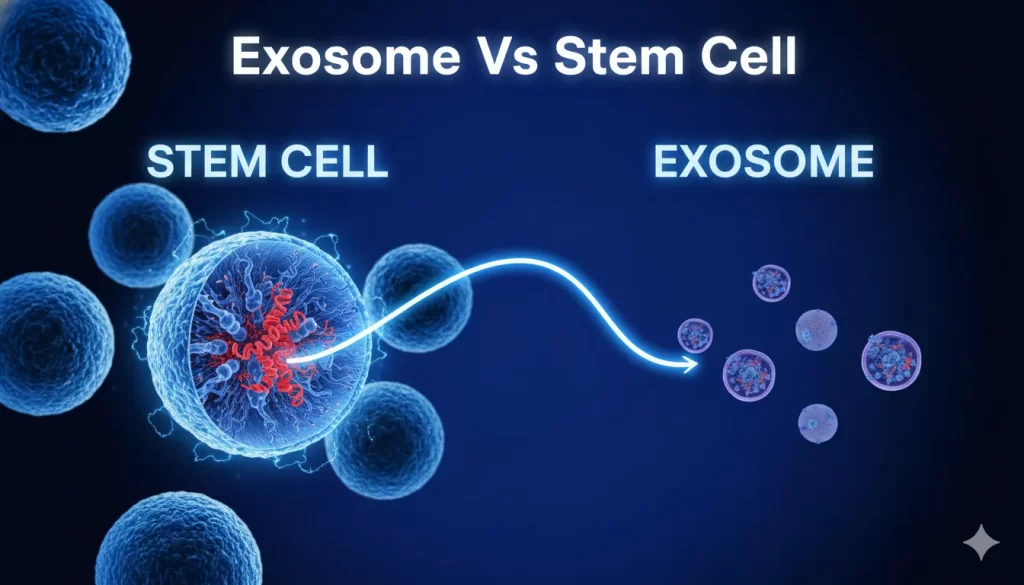
If you’ve been looking into new medical treatments… you’ve probably heard about stem cells and exosomes. Both are creating BIG waves in the medical world. But here’s the thing, they’re NOT the same. Not even close.
Let me break this down for you.
A stem cell is an actual living cell. Think of it like a tiny factory that lives and breathes inside your body.
Here’s what makes stem cells special:
Stem cells come from different places. You can find them in bone marrow, fat tissue, and umbilical cords. Scientists also work with embryonic stem cells and induced pluripotent stem cells, which can develop into almost any cell type.
The medical community has been studying stem cells since 1957. Right now, the FDA has approved stem cell therapy for blood and immune system problems. A few other treatments got approval in Canada and Europe too.
But stem cells come with some issues…
When doctors inject stem cells into your bloodstream, the cells are pretty big. They can get stuck in your lungs. Some people’s immune systems attack the new cells because they see them as foreign invaders. And in rare cases, stem cells can form tumors.
Now let’s talk about exosomes. They’re totally different.
Exosomes are NOT cells at all. Think of them as tiny delivery packages. Or better yet… imagine soap bubbles.
Here’s how they work:
Inside a cell, a little bubble forms. This bubble gets surrounded by fat. Then the cell packs this bubble with important stuff—growth factors, proteins, messenger RNA, and other helpful molecules. Eventually, the cell releases this bubble into your bloodstream or the area around it.
These tiny bubbles float around looking for cells that need help. When they find a damaged or sick cell, they deliver their cargo. It’s like they’re saying: “Hey, you’re hurt. Here’s a repair kit to fix yourself”.
Exosomes show up everywhere in your body—breast milk, urine, blood, saliva, and lung fluid. Your cells make them naturally to communicate with each other.
The ones doctors care about most? Those come from stem cells. These exosomes carry the healing instructions from stem cells without the risks of using actual stem cells.
Let’s talk size. The difference is MASSIVE.
An exosome measures between 30 and 150 nanometers. A stem cell? About 100 times bigger.
Picture this: if an exosome was the size of a rubber band, a stem cell would be the size of an Xbox controller. That’s a wild size gap.
And the numbers? Even more dramatic.
| Feature | Stem Cells | Exosomes |
|---|---|---|
| Size | 100x larger | 30–150 nanometers |
| Typical dose | 25–30 million per treatment | 10–50 BILLION per vial |
| Has nucleus | Yes | No |
| Can replicate | Yes | No |
| Can differentiate | Yes | No |
When you get a treatment with 50 million stem cells, you might also get a vial with 20 to 50 BILLION exosomes. The numbers aren’t even in the same ballpark.
Let me make this crystal clear:
Stem cells are living cells. They have a nucleus. They can divide and make copies of themselves. They can turn into different types of cells your body needs.
Exosomes are NOT living cells. They don’t have a nucleus. They can’t replicate. They can’t turn into other cell types. They’re just delivery vehicles carrying helpful molecules.
But here’s where it gets interesting…
Exosomes might actually be BETTER for some treatments. Research shows they can do similar healing work as stem cells without the safety concerns.
You can store exosomes at room temperature after freeze-drying them. You can filter them to make sure they’re sterile. You can even breathe them in as a mist to treat lung problems.
And get this—scientists can engineer exosomes to carry specific drugs or molecules. Researchers recently created an inhalable COVID-19 vaccine using modified exosomes.
Stem cells work by settling into damaged tissue and either turning into new healthy cells OR releasing helpful chemicals that tell nearby cells to repair themselves.
Exosomes take a different approach. They float through your body looking for cells with inflammation or damage. When they find a sick cell, they are absorbed. Then they release their payload of growth factors, proteins, and genetic instructions.
It’s cell-to-cell communication at its finest.
People with Lyme disease, autoimmune problems, or stroke damage have seen benefits from exosome therapy. The research keeps growing, showing how these tiny packages can help repair tissue and cellular damage.
Right now, over 7,000 clinical trials are testing stem cell treatments. About 158 studies are looking at exosome therapies. Out of those exosome trials, 31 specifically test stem cell-derived exosomes as an alternative to actual stem cell therapy.
The market sees huge potential. Analysts predict the global stem cell market will hit $31.6 billion by 2030. The exosome market should reach $1.03 billion by the same year.
But there are challenges…
Making exosomes on a large scale is tough. Every batch can vary slightly. The FDA has issued safety warnings about unapproved stem cell and exosome products. We need better quality control and standardized manufacturing processes.
Here’s something important—some clinics try to confuse patients.
If a clinic tells you they’re offering “100 billion stem cells,” that’s wrong. They’re actually giving you 100 billion exosomes, not stem cells. Remember the numbers: a typical stem cell dose is 25-50 million cells. You can’t physically get billions of stem cells in one treatment.
Always ask questions. Make sure you understand exactly what treatment you’re receiving.
Many doctors now use BOTH stem cells and exosomes together. The combination seems to work better than either one alone.
The stem cells can settle into tissue and turn into new healthy cells. The exosomes act as messengers, carrying repair instructions to damaged areas and telling cells how to heal themselves.
This dual approach has shown promising results in clinical settings.
So what’s the difference?
Stem cells = living cells that can grow, divide, and transform into specialized cells
Exosomes = tiny non-living packages made BY cells that carry healing messages and molecules
Both have medical potential. Both are being researched heavily. But they work in completely different ways.
Stem cells might be better when you need actual new cells to replace damaged tissue. Exosomes might work better when you need to reduce inflammation and help existing cells repair themselves.
The science is still developing. Researchers are figuring out the best uses for each therapy. But one thing is clear—understanding the difference helps you make smarter decisions about your health.
Whether you’re dealing with joint pain, autoimmune issues, or other conditions… knowing what you’re actually getting matters. Don’t let anyone confuse you with fancy marketing terms. Ask direct questions. Get clear answers.
And remember, exosomes and stem cells are NOT the same thing. Not even remotely close.
Contact US
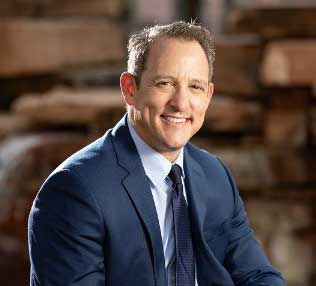
Dr. David Greene
MD, PhD, MBA
Dr. David Greene, MD, PhD, MBA, is a pioneering leader in regenerative medicine and healthcare marketing. As a residency and fellowship-trained orthopedic surgeon, Dr. Greene transitioned from clinical practice to become the founder and CEO of R3 Stem Cell and US Lead Network, where he has revolutionized patient care and medical practice growth through innovative therapies and digital marketing strategies. He has authored two influential books on healthcare internet marketing, ranks among the top expert authors globally, and has been featured on the cover of Corporate Vision magazine for his impact on global regenerative therapies. Beyond his professional achievements, Dr. Greene is passionate about education, compassion, and continuous innovation.

About R3 Stem Cell Mexico
Follow Us
Quick Links
Disclaimer
Stem cell therapy is considered experimental and is regulated by the U.S. Food and Drug Administration (FDA), but it is not FDA-approved. R3 Stem Cell does not offer stem cell therapy as a cure for any medical condition. No statements made on this site have been evaluated or approved by the FDA. This site does not provide medical advice. All content is for informational purposes only and is not a substitute for professional medical consultation, diagnosis, or treatment. Reliance on any information provided by R3 Stem Cell, its employees, others appearing on this website at the invitation of R3 Stem Cell, or other visitors to the website is solely at your own risk. R3 Stem Cell does not recommend or endorse any specific tests, products, procedures, opinions, or other information that may be mentioned on this website. R3 Stem Cell is not responsible for the outcome of your procedure. The FDA considers stem cell therapy experimental at this point.
Contact Us
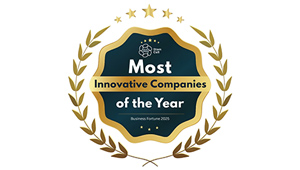

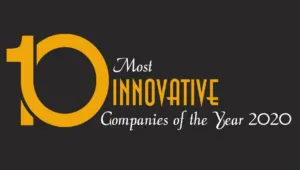



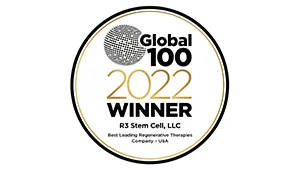
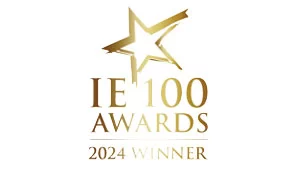
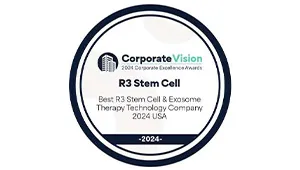

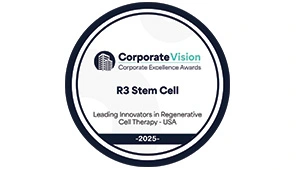
Copyright © 2016 – 2025 R3 Stem Cell